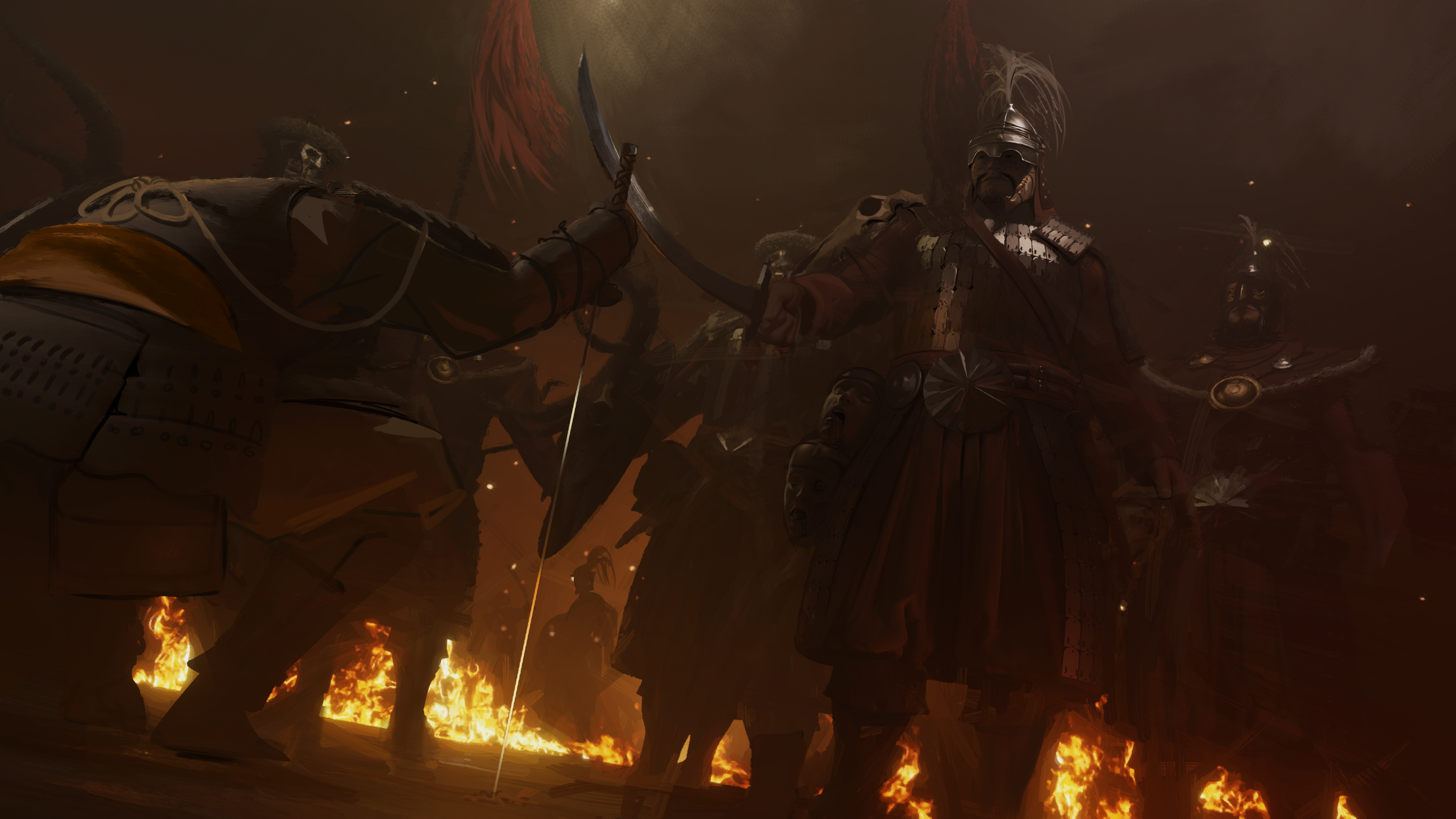In 1331 T-K, Jagun Khan’s forces landed simultaneously on both the eastern and western peninsulas of Ikaiguchi. His mounted archers swept across the land, setting fire to all in their path and quickly subduing the populace.
By the time the emperor could consolidate his forces and launch a counterattack it was too late. The emperor bravely faced Jagun in a final tumultuous battle, but was slain by the warlord’s own hand. With their emperor gone, and most of the clan leaders defeated or in hiding, there was little that could be done to stop Jagun taking control of the whole island.
However, to consolidate his hold on Ikaiguchi and avoid an immediate rebellion, Jagun recognized he would have to appoint a native to sit upon the throne. Thus, he chose a minor noble named Iso, who would act as puppet emperor. So effective was he at keeping the peace, that Jagun eventually tired of Ikaiguchi, returning to oversee his empire’s expansion on the mainland. Iso was left with a contingent of Ongoru horsemen, who continued to occupy the island and quell any sign of resistance with brutal efficiency.
It was not until 1350 T-K, and the eruption of Mount Akasofu, that the first real signs of uprising began. By now Jagun was dead, and his sons Surtak and Yesukai had taken over control of his empire. But it was an empire that was fracturing, as the two began to war between one another.
